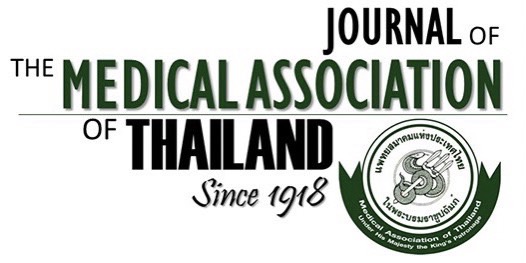Clinical Outcomes of Microscopic Lumbar Discectomy with Tubular Retractor
Akkapong Nitising MD*, Thanapol Ngammanee MD*, Bunpot Sitthinamsuwan MD*, Luckchai Phonwijit MD*
Affiliation : * Division of Neurosurgery, Department of Surgery, Faculty of Medicine Siriraj Hospital, Mahidol University, Bangkok, Thailand
Background : The conception of microscopic lumbar discectomy with tubular retractor (MDT) was first introduced in 1997.
In Thailand this procedure and its clinical outcomes have not been described.
Objective : To describe the MDT technique for treatment of lumbar disc herniation and to report clinical outcomes.
Material and Method: A prospective study involving 20 consecutive cases with lumbar disc herniation treated by MDT was
conducted. The SF-36 was used to quantify the clinical results. The degree of pain was also measured by visual analog scale
(VAS). The outcomes were measured pre-operatively, and then 1 month and 1 year after the surgery.
Results : There was dramatic improvement of mean SF-36 and VAS at 1 month and 1 year postoperatively, as compared to
pre-operative status. The average length of hospital stay was 4 days. The time to return to work or normal activity was 37.5
days. The average operative blood loss was 50 ml and the intravenous narcotic use was 9/20 (45%).
Conclusion : MDT is effective with fine long-term outcomes in treating lumbar disc herniation when compared with standard
open microdiscectomy. It allows smaller incisions and less tissue trauma. Strict adherence to pre-operative patient-selection
criteria should ensure optimal postoperative outcomes.
Keywords : Microscopic lumbar discectomy, Tubular retractor, Lumbar disc herniation, Outcome



